Patrol GU Steering Box To Landcruiser 80/105 Infomation And Fitting Guide
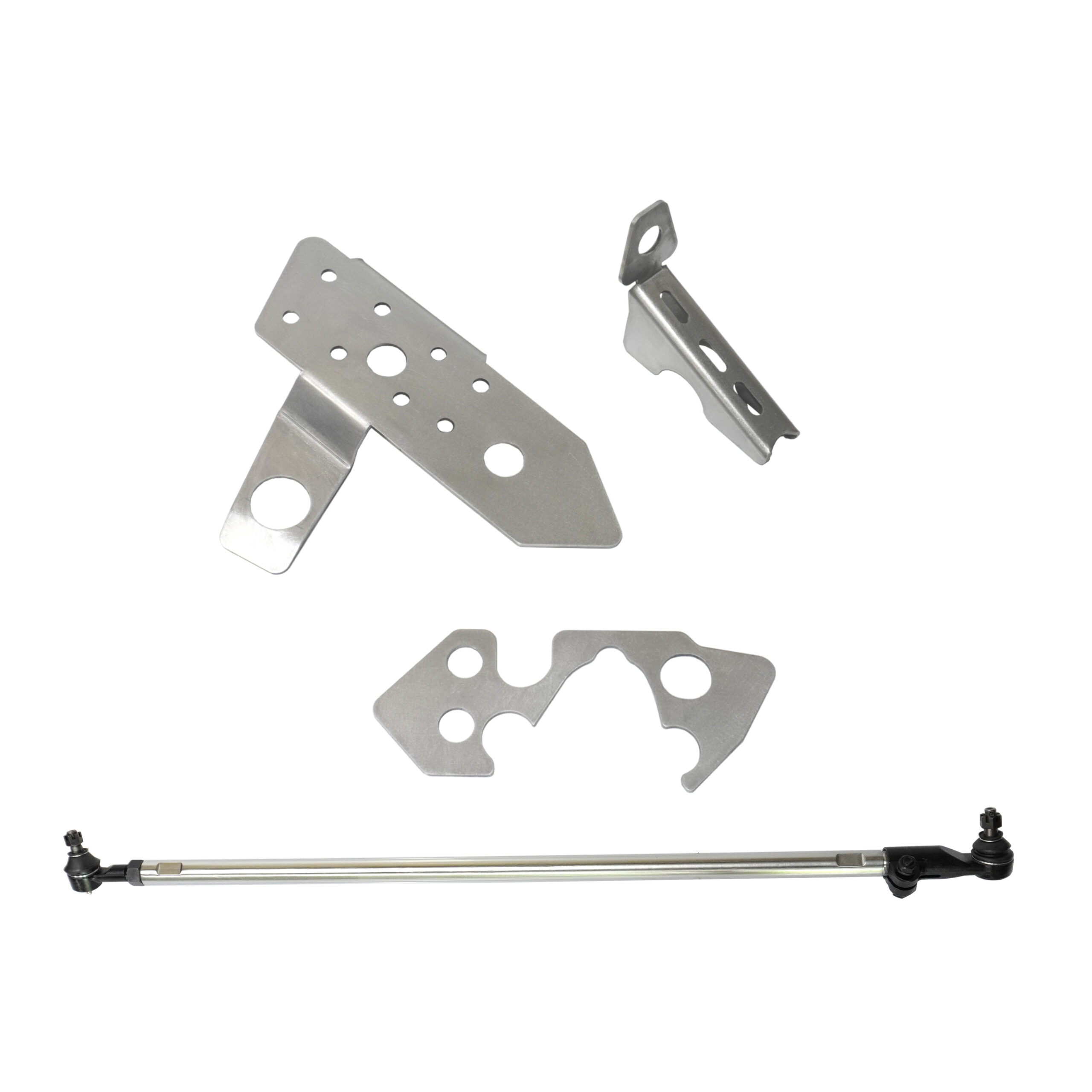
Summary for Welding Preparation:
- Disconnect the battery to avoid any electrical issues during welding.
- Drain the power steering fluid by removing the fittings on the steering box.
- Drain the coolant by removing the bottom radiator hose. If the coolant was recently replaced, catch it in a clean bucket to reuse.
- The bottom radiator hose must be removed to provide clearance for accessing tools.
- Remove factory steering box and drag link Before removeing steering box make sure your steeing wheel inside car is held center you can tie it in place with straps.
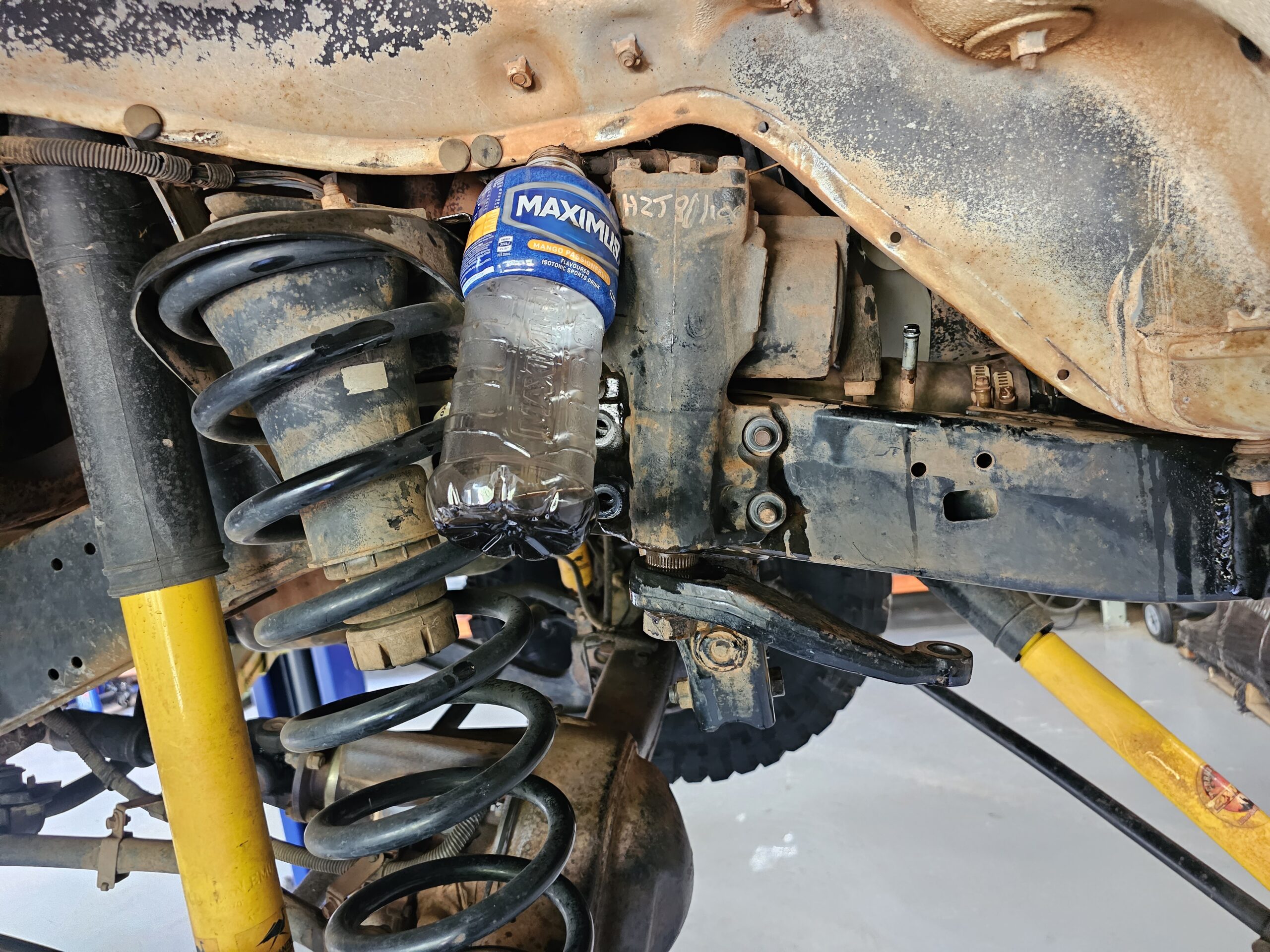

Dummy fit the GU Steering Box using the outer plate as a template to ensure you have the correct kit. Link up the steering column and test fit it before drilling your chassis. Once the test fit is complete, proceed to the next steps. This process ensures everything fits correctly before making permanent modifications. Once all necessary fluids are drained and old parts removed use the outer brace plate as a template. Secure the outer chassis plate in the correct location using the factory steering box bolts before drilling.
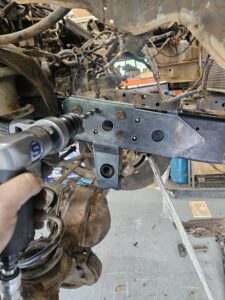
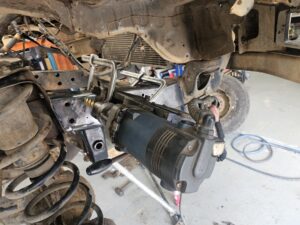
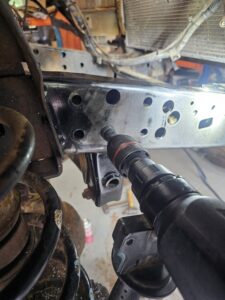
Because of the panhard mount you will need to use a drill long enough to drill the back side.
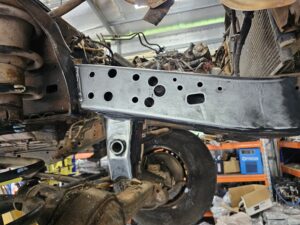
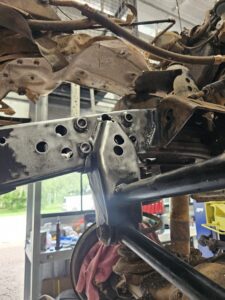
Holes through to the engine side and preparing the inside of the chassis rails.
This is done by using small wire wheels on a die grinder to clean and prep the surfaces effectively.
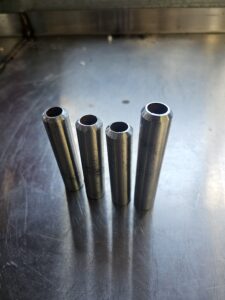
The bevel preparation for one side of the crush tubes requires a 30-degree angle.
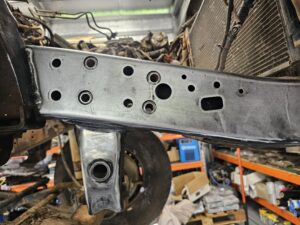
The crush tubes are designed with bevel preparation to ensure proper welding techniques, resulting in a strong and reliable weld.
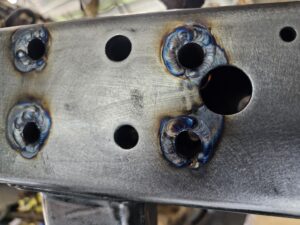
TIG welding is used to ensure proper penetration, while MIG welding can also be effective if done correctly.

Once welding is complete, sand any protruding weld material to ensure a flat mating surface for the steering box.
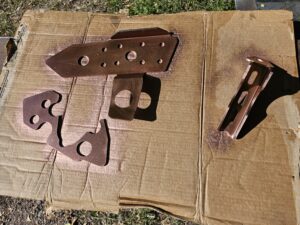
Weld-through primer is a specialized coating used to protect metal surfaces from corrosion.
Preparation
Welding
- Once the parts are tacked and prepared for welding, it’s important to clean the edges, even if wire attachments are used. While the design allows for welding through paint, welding on bare metal typically results in better weld quality.
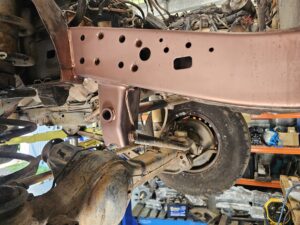
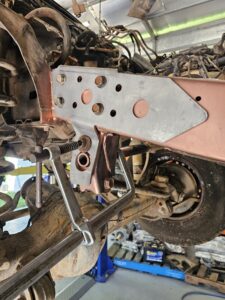
It’s important to bolt the outer plate using the factory bolts to ensure the plate sits flat. You’ll need to use clamps and adjust the steel to match the shape of the panhard. This is a general fabrication technique.
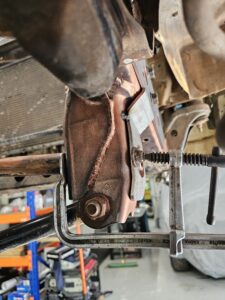
Tack and Clamp as you go !
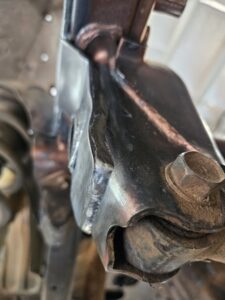
The panhard mount requires some hammering and metal finishing due to its shape. With fabrication skills, you can achieve a neat installation. A helpful tip is to use a Rawhide Hammer, which has a soft face that won’t damage the steel while providing enough force for assembly tasks.
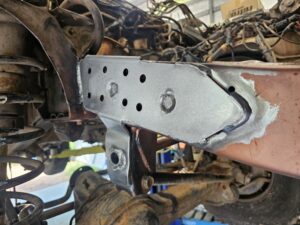
Outer plate fully welded
In the shop, we perform welding according to standard procedures, but some engineers may request more or less welding based on their specifications. Additionally, we seam seal parts that aren’t welded to prevent corrosion.
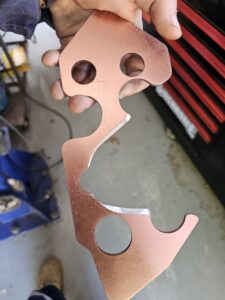
To address clearance issues with the back of the inner plate, if the factory weld is preventing it from laying flat, the solution would be to carefully bevel any edges like in the photo.
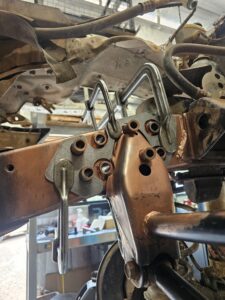
Clamp and tack inner plate in place
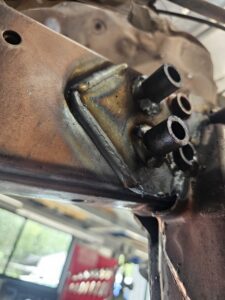
It’s important to weld all crush tubes to the inner plate, including the factory-installed ones, as this significantly increases the strength of the chassis.
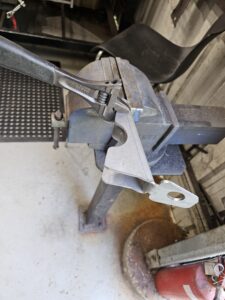
The manufacturing process of these parts requires special tooling, In the press its very tight. To adjust the flanges for a perfect fit, the best method is to clamp them in a vice and use a shifter . Take your time to ensure everything fits correctly.
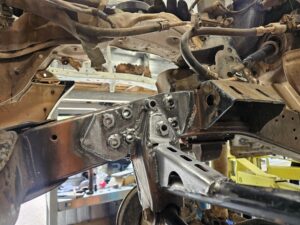
The crush tubes are left long during welding to prevent the parent material from overheating and losing its strength. It’s best to cut and sand them to the correct length after welding.
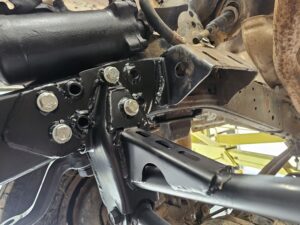
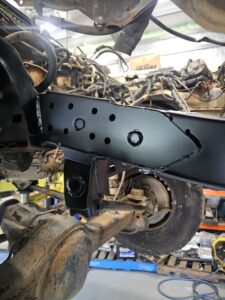
After welding and cleaning, apply a high-quality primer and top coat, using two coats for better protection. Satin black is a good choice as it blends well with factory colors, while gloss may not look ideal on a chassis.

- Tie Rod Alignment: Ensure the tie rod is properly aligned, which indicates the wheels are true and square. This can be checked with the wheels removed by using a straight edge on the wheel mating surface. You’ll need two people to measure both the front and back.
- Centering the Steering Box: Before fitting the steering box, count the turns from left to right. Divide the total turns by two to find the center of the steering stroke.
- Fitting the Drag Link: Once alignment is confirmed, fit the drag link to the adjusted length. Be sure to use Loctite on all locking nuts and torque them correctly to prevent loosening and damage to threads.
- Fine-tuning the Steering Wheel: If necessary, remove the steering wheel to fine-tune the center position on the splines. Apply moly grease on the splines to prevent corrosion and ensure easy disassembly in the future.
This will help ensure proper installation and prevent future issues with the steering system.
Steps to Bleed the Steering Box:
-
Ensure Fluid is Filled:
- Start by ensuring the power steering reservoir is full of the correct type of fluid. Do not overfill it, but make sure it’s above the minimum mark.
-
Lift the Vehicle:
- If necessary, jack up the front of the vehicle and place it securely on jack stands. This will make it easier to rotate the steering wheel without any load on the tires.
-
Start the Engine:
- Start the engine and let it idle.
-
Turn the Steering Wheel:
- Have someone sit in the driver’s seat. Slowly turn the steering wheel all the way to the left and then to the right. Go from one lock to the other (full left, full right) several times. This helps to push the fluid through the system and expels air.
-
Check Fluid Level:
- Keep checking the power steering fluid level in the reservoir as you turn the wheel. If the fluid level drops, top it up to the correct level.
-
Check for Air Bubbles:
- While turning the steering wheel, you should hear the power steering pump working. If you hear whining noises or if the steering feels heavy, there’s likely air in the system. Continue to rotate the wheel to purge the air out.
-
Repeat:
- Repeat the process of turning the wheel from full left to full right until you no longer hear air bubbles or the whining noise, and the steering feels smooth.
-
Final Check:
- Once you’ve completed the process and there are no more air bubbles in the fluid, check the fluid level one final time and top it up if necessary.
-
Lower the Vehicle:
- If you lifted the vehicle, lower it back to the ground once you’re satisfied with the fluid level and the system is bled properly.
-
Test Drive:
- Take the vehicle for a short test drive to ensure the steering is smooth and there’s no whining noise or resistance in the wheel.
Notes:
- Always use the correct type of power steering fluid specified
- If you continue to experience problems with the steering after bleeding the system, there might be an issue with the pump, steering box, or hoses, and you should inspect them for leaks or damage.
If you’re still having trouble or hear a lot of noise after bleeding, it could be worth checking for leaks in the system, as air can be drawn in if there’s a problem with seals or hoses.